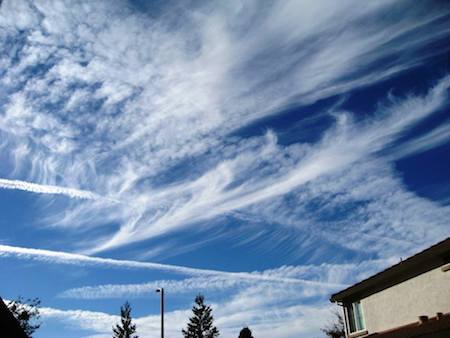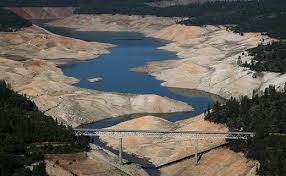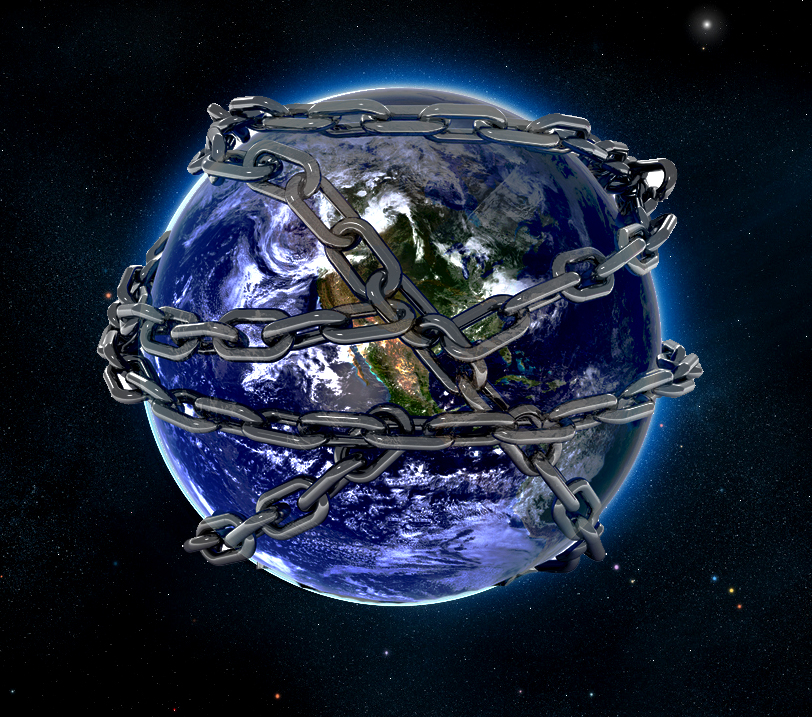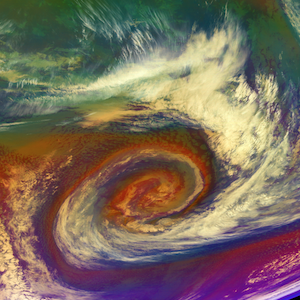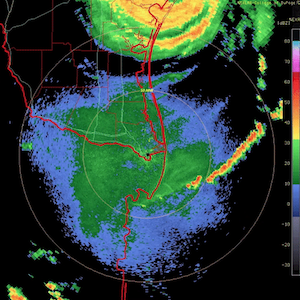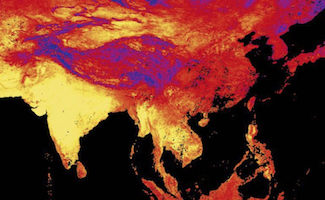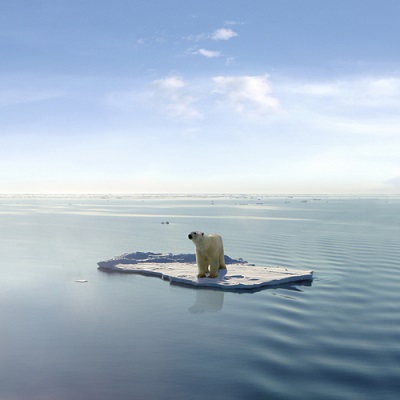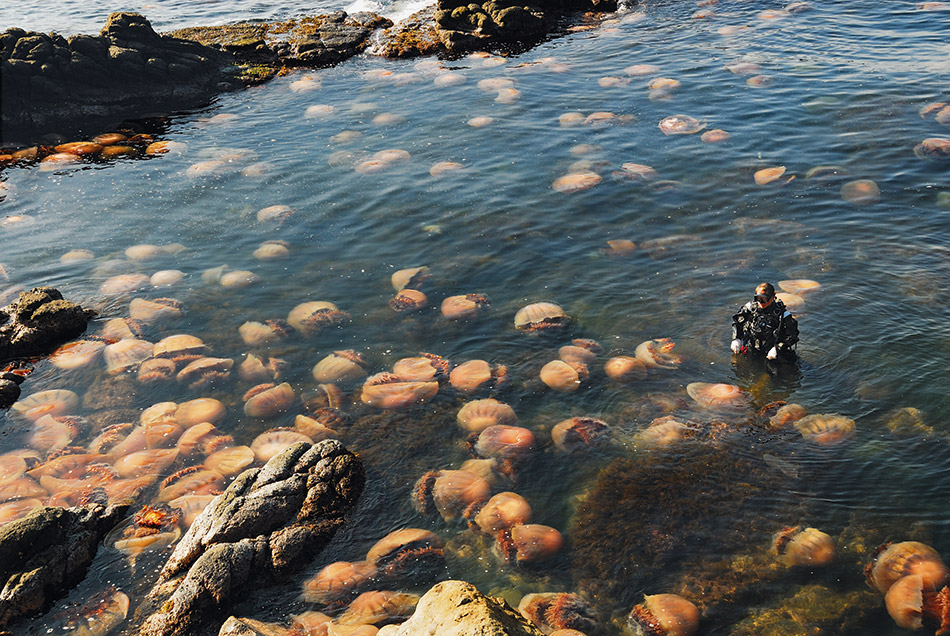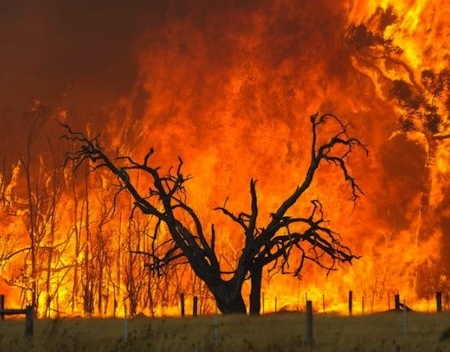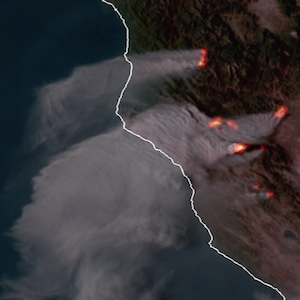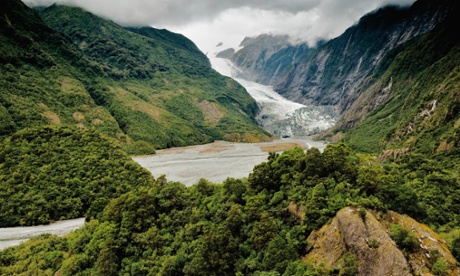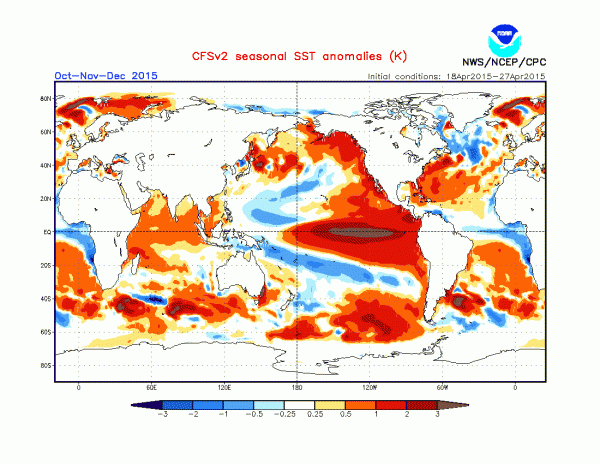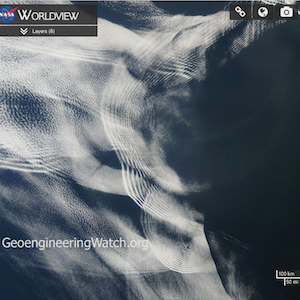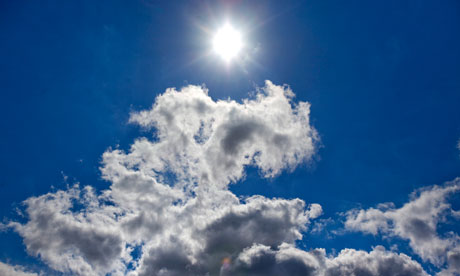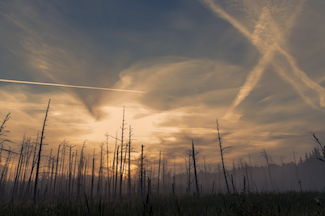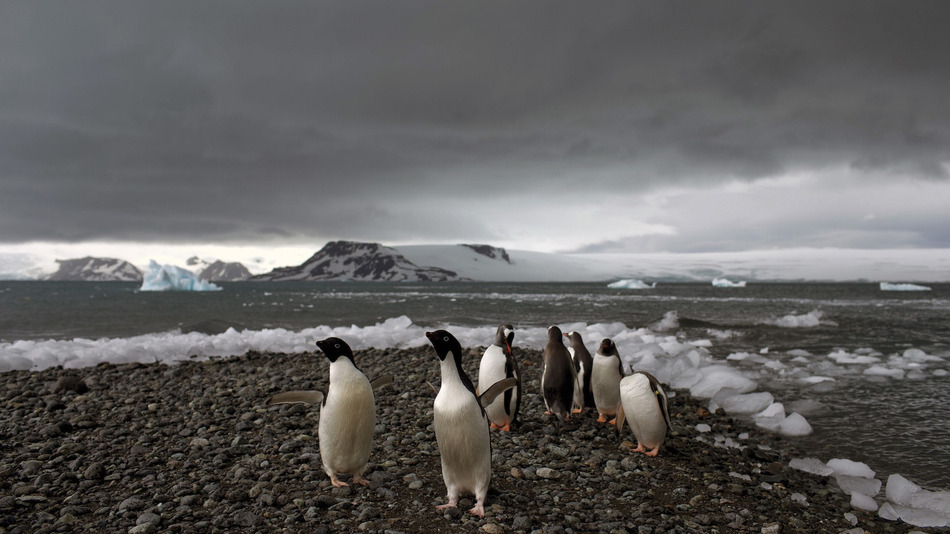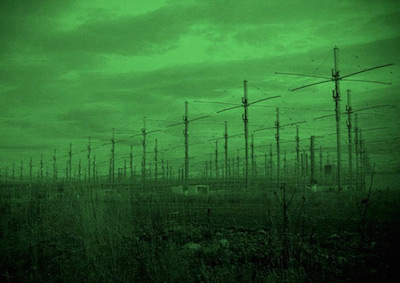Source: Truthout
Recent studies show that current animal extinction rates from anthropogenic climate disruption now rival the extinction that annihilated the dinosaurs 65 million years ago. Once again, this month’s survey of the planet shows how climate disruption is continuing to intensify.
“The supreme reality of our time is … the vulnerability of our planet.”
– John F. Kennedy
Recent studies show that current animal extinction rates from anthropogenic climate disruption (ACD) now rival the extinction that annihilated the dinosaurs 65 million years ago.
“If that rate continues unchanged, the earth’s sixth mass extinction is a certainty,” said Anthony Barnosky, a biology professor at the University of California, Berkeley.
To see more stories like this, visit “Planet or Profit?”
Certainly there are no signs of our planetary ACD trajectory changing, aside from continuing to ramp up further into abrupt runaway change.
In fact, the International Union for the Conservation of Nature recently updated its authoritative Red List to include more than 22,000 species on the list of the world’s most threatened animals. Species like the Pacific bluefin tuna and the American eel are now on the Red List.
Is it already too late to turn things around?
NASA data showed that this October was the globe’s warmest on record, and for the third month in a row, global temperatures broke records, which kept 2014 on track to become the hottest year ever recorded. Bear in mind that the 10 warmest years ever recorded have all occurred since 1998. Recent data from the National Oceanic and Atmospheric Administration confirmed that the first 10 months of 2014 were the hottest since record keeping began.
November’s record-breaking snowfall in New York is just a precursor of things to come as runaway ACD continues to intensify, and as studies reveal that these types of extreme weather events are now part of a long-term pattern that is the new normal.
The World Bank, not exactly a bastion of environmentalism, released a new report that claims that without dramatic action, the planet will experience at least 4 degrees Celsius warming by the time current teenagers turn 80.
Even though the planet is currently only .85 degrees Celsius above pre-industrial baseline temperatures, the effects of ACD continue to be dramatic.
New data from the American Geophysical Union show that a West Antarctic ice sheet that is approximately the size of Texas is melting three times faster than previously believed. This means that the area’s melt rate has tripled in just the last decade and is losing the amount of ice equivalent to Mount Everest every other year.
Ocean researchers recently announced that people living in the United States could expect spring to arrive earlier and fall to arrive later, the new normal since ocean temperatures in the northeastern Atlantic are increasing.
The International Energy Agency’s 2014 World Energy Outlook was released recently, and said that at the current rate of emissions, the world has to cease all carbon emissions by 2040 in order to stay under the arbitrary 2-degree Celsius political target of temperature rise. It is worth noting that James Hansen has come out and said that even a 1-degree Celsius temperature increase above the pre-industrial baseline would have disastrous consequences.
Is it already too late to turn things around?
A recent Google analysis seems to think so: “So our best-case scenario, which was based on our most optimistic forecasts for renewable energy, would still result in severe climate change, with all its dire consequences: shifting climatic zones, freshwater shortages, eroding coasts, and ocean acidification, among others.”
To get an idea of how rapidly we’ve warmed the planet, have a look at this short NASA tracking map.
This month’s survey of the planet and ACD-related studies, once again, shows clearly how things are only continuing to speed up and intensify.
Earth
A recent Austrian report on ACD showed that the country’s temperatures have already risen twice as fast as the global average since 1880, causing less snow, shorter ski seasons, and more landslides and forest fires. It also is causing villages to move, ski lifts to be dismantled, and people to have to find ways to adapt to their new environments.
California is literally running out of water.
In Africa, Senegal has been struggling to hold off the Sahara desert, but that battle is clearly not a sustainable one given the water crisis in the area.
Canberra, Australia, is experiencing a dramatic change due to ACD, as a series of dramatic environmental consequences like massive numbers of wasps, growing lake algae, and dramatically increasing wildfires are projected to become the new norm for the area.
The recent Ebola scare in the United States is something that could become more common, thanks to ACD. Other tropical diseases, spread by insects and not humans, now pose a growing threat to the United States.
Scientists along the West Coast of the United States gravely monitored a large-scale die-off of small seabirds, whose breeding grounds included a colony in the Farallon Islands off the coast of San Francisco. Dramatic increases in ocean temperatures and feeding conditions, both due to ACD, are among the reasons being investigated as the cause.
A recent study published in Ecological Applications showed a stunning decline in the number of polar bears, and illustrated how ACD impacts are rapidly pushing the bears toward extinction. The study said that polar bear populations in eastern Alaska and western Canada have declined by 40 percent recently.
Of this, the Center for Biological Diversity’s Sarah Uhlemann said, “Global warming has put Alaska’s polar bears in a deadly downward spiral. It’s happening now, it’s killing polar bears now, and if we don’t act now, we will lose polar bears in Alaska.” The population of polar bears in the Southern Beaufort Sea area has now dropped to only 900 bears, which is a severe decline from the 2006 estimate, which logged more than 1,500.
In addition, only two out of 80 polar bear cubs tracked by the study team between 2004 and 2007 had survived, when normally about half of the cubs survive.
Lastly in this section, ACD is in the process of stripping away the identity of Glacier National Park in Montana. One hundred years ago, there were 150 ice sheets in the park, and today that number is down to 25. Within 30 years, there will likely be none.
Water
Water continues to amplify the impacts of runaway ACD across the globe.
California’s drought now threatens to extinguish the last of the Muir Woods coho salmon.
In California, where record-setting drought continues despite some recent rains, three years on, farmers and ranchers have to sell off large portions of their herds, work longer hours and take other jobs. This is particularly worrisome, given that half of all the fresh food eaten in the United States is produced in California.
In the mountains above the Central Valley in California, ski areas up and down the Sierra Nevada have less snow than ever, and are having to ramp up human-made snow to remain open. Their futures appear bleak indeed.
It’s well known now, and has been for quite some time, that California is literally running out of water, and the massive infrastructure changes needed to cope with this fact haven’t even begun to be constructed.
The ongoing record drought in the southwestern United States has revealed shocking changes along the Colorado River, which has further raised alarms about the growing lack of water across the region, which climate models predict will become increasingly water-starved as we move into the future.
The drought in Brazil is bad enough that Sao Paulo, the megacity of 20 million that is being wracked by relentless water shortages, has only two months of guaranteed water supply remaining, according to local officials. The city might have to “get water from mud” if the drought persists.
Meanwhile up in the Andes, the high-altitude glaciers in Ecuador, Bolivia, Columbia and Peru are melting at breakneck speed, causing scientists to worry that many of them will disappear long before anything can be done to save them. This phenomenon also threatens the freshwater supplies of many cities in these countries.
Warmer air is making it more difficult for airplanes to take off.
Across the Atlantic and on the other end of the water spectrum that is becoming increasingly amplified by ACD, Britain, reeling from the first onslaught of floods and winter storms, was warned it could face one of the wettest winters in three decades.
In November, a mega-snowstorm dumped a years’ worth of snow in a four-day period in New York, broke records and left at least 13 people dead.
Also in that region of the United States, ice began forming on the Great Lakes faster this year than ever before, as Lake Superior saw areas freezing on November 15, according to Great Lakes Environmental Research data.
Rising sea levels continue to take their toll.
In the United States, a recent estimate revealed that approximately $1.4 trillion worth of coastal property could be threatened by 2100.
The coastal village of Shishmaref, Alaska, faces an existential threat, as the 600 residents on the sinking barrier island are watching their land erode into the Chukchi Sea while the federal government has yet to produce a new location for them to relocate.
Off the western coast of Canada, a recent report showed that record-breaking temperatures in the North Pacific Ocean are threatening marine species there.
Further south along the coast, California’s drought now threatens to extinguish the last of the Muir Woods coho salmon that typically make their way from the ocean to spawn in a freshwater creek through the redwoods near San Francisco, according to state officials.
On the East Coast of the United States, a Maine state commission is urging action toward increasing research and monitoring the risk of increasingly acidic ocean waters harming the state’s commercial fisheries and lobsters, in addition to urging action toward reducing local pollution that is impacting the chemistry of the water.
As sea levels continue to rise globally, major river deltas where more than 500 million people live “could be drowned,” according to a new study.
Lastly in this section, the Republic of Kiribati, the most remote inhabited location on the planet, has become the first country on the planet to surrender to ACD. It will no longer exist by 2050, at the very latest.
Air
As temperatures continue to increase around the planet, warmer air is making it more difficult for airplanes to take off, according to a recent study. Higher temperatures cause the air to become less dense, which then reduces the lift force on airplane wings. This means tighter restrictions on luggage, as well as how many people are allowed on board planes.
For these true believers, the apocalypse is preferable to taking responsibility for the anthropogenic origins of climate disruption.
In Brisbane, Australia, leaders at the recent G20 summit were met with a wake-up call from nature to pay attention to ACD, as temperatures reached 40 degrees Celsius (104 degrees Fahrenheit) and a heat wave rolled through eastern Australia.
Australia has always struggled with hot weather, but the intensity and length of its heat waves are on the rise, enough so that the entire country is being forced to rethink how it lives, works and recreates.
Over Thanksgiving, California saw many new record high temperatures in San Diego, Los Angeles, Santa Ana, Riverside, Escondido, Oakland, Santa Maria, Sandberg, Oceanside, Alpine and other cities and areas.
A new project is tracking the fate of ancient carbon in the Siberian Arctic, where the amount of carbon stored in Arctic permafrost is estimated to be more than double the amount that is currently in our atmosphere, and four times as much as is in all the forests on the planet. As Arctic temperatures continue to increase, the permafrost is thawing and its carbon, largely in the form of methane, is being released at ever increasing rates.
The Arctic methane situation is dire, and Truthout will soon be releasing an investigative report on the matter.
Fire
A recent study published in Nature, titled “Learning to coexist with wildfire,” urges us to find “a more sustainable coexistence with wildfire,” because “Without a more integrated framework, fire will never operate as a natural ecosystem process, and the impact on society will continue to grow.”
The report recommends “a more coordinated approach” geared toward risk management and “land-use planning” in an effort aimed at mitigating fire damage and minimizing property loss.
Denial and Reality
A recent report on theology and ACD revealed that half of the people living in the United States believed that ACD is a “sign of the apocalypse.” For these true believers then, the apocalypse is preferable to taking responsibility for the anthropogenic origins of climate disruption.
Geoengineering, the plan of people like Bill Gates and other billionaires to use technological fixes to correct what technology caused in the first place, “could harm billions” of people around the world.
Another recent study, this one published in the journal Nature Climate Change, showed that the extreme weather events and record-breaking temperatures that have both become the new normal do little to nothing to convince people that ACD is real. The study also revealed that people’s political ideology has much more impact on their beliefs about ACD than do things like reality and facts.
Yet, despite the ongoing denial about ACD, even lifelong Republican George Shultz, Ronald Reagan’s secretary of state and Bechtel mogul, is embracing adaptation measures like using more solar and taking other measures to mitigate ACD.
Similarly, ex-BP chief Lord Browne, who is also one of the energy world’s most influential voices, recently said that ACD poses an “existential threat” to the existence of energy and mining companies, thereby acknowledging ADC’s reality.
A recently released map of the globe illustrates the results of surveys and polls from around the world since 2009, and shows what people think about ACD. For example, 84 percent of Argentinians believe ACD is real, and 83 percent of US citizens believe their country should be making efforts at mitigating ACD, “even if it comes with economic costs.”
The largest reinsurance firm in the world, Munich Re America, conducted a poll in the United States and found that 83 percent of Americans at least believe the climate is changing.
Another reality check comes from a new set of scientific studies that show how geoengineering, the plan of people like Bill Gates and other billionaires to use technological fixes to correct what technology caused in the first place, “could harm billions” of people around the world.
Even a geoengineering scientist recently admitted that he is “terrified” of his own technology.
Nevertheless, plans to take the planet further off the cliff continue apace, as actions to cool the earth using geoengineering are scheduled to begin in just two years, as reported in the New Scientist.
Previous estimates of sea-level rise are wrong, and instead of a maximum sea level rise of one meter by 2100, the maximum is nearly two meters rise by then.
The World Bank recently admitted that some ACD impacts are now “unavoidable,” even if governments acted quickly to cut greenhouse gas emissions. In the aforementioned report, the group also said that earth is on track to reach an unavoidable 1.5-degree Celsius temperature increase by 2050, but could also reach a 4-degree Celsius increase by 2100.
This is a significant statement from a conservative entity like the World Bank, given that humans have never lived on a planet warmer than 3.5 degrees Celsius above pre-industrial baseline temperatures.
Meanwhile, the signs of runaway ACD abound.
Forecasters in Britain announced that this year could be the UK’s warmest for nearly 250 years, as measured by the world’s oldest record of temperature.
A study published in the October 2014 issue of Environmental Research Letters revealed that all of the previous estimates of sea-level rise are wrong, and instead of a maximum sea level rise of one meter by 2100, the maximum is nearly two meters rise by then. Incredibly, this study has been ignored by virtually all of the media, not just the corporate press.
The results of a very important study published in Environmental Research Letters show that carbon dioxide brings its peak heat impact within a decade of being emitted, with its effects then lingering for 100 years, or more, into the future.
“The way we talk about climate change is often, ‘oh, we’re really making emissions cuts for the sake of our children or grandchildren’ because the effects won’t be felt for decades,” said Katharine Ricke, a research fellow from Stanford who led the study. “But the implications are that there’s certainly benefits that can be reaped by people making decisions today.”
NASA recently produced an unsettling video that shows what the planetary atmosphere looks like on carbon dioxide, and also announced recently, that the Arctic sea ice extent is still well below normal, and continuing along its years-long downward trend (which is historically steep).
This is troubling for obvious reasons, but also because a study published in Nature in August 2014 showed how even small fluctuations in the sizes of ice sheets during the most recent ice age were enough to “trigger abrupt climate change.”
Abrupt climate change has been a key factor in all of the planet’s previous mass extinction events.
Source: Truthout







